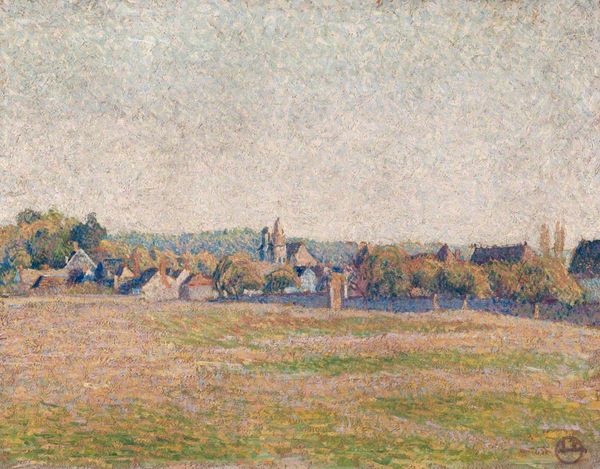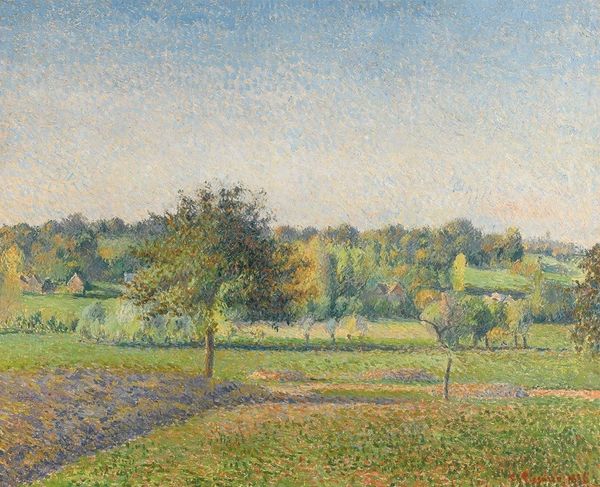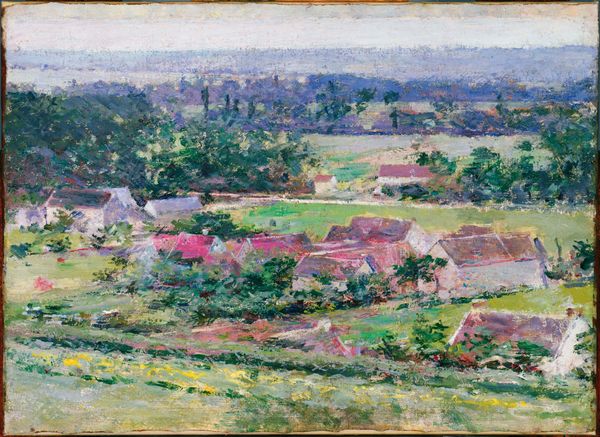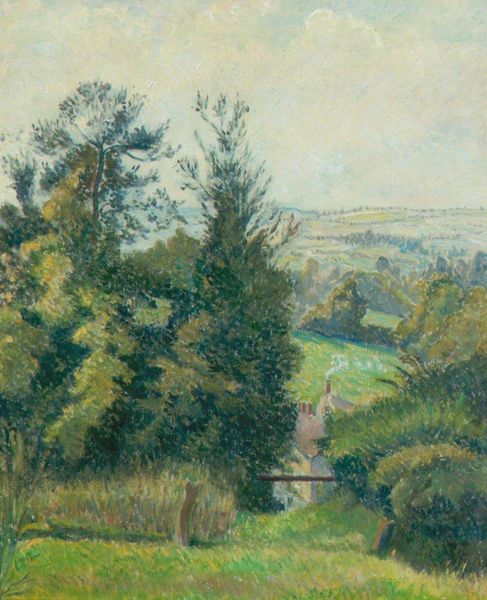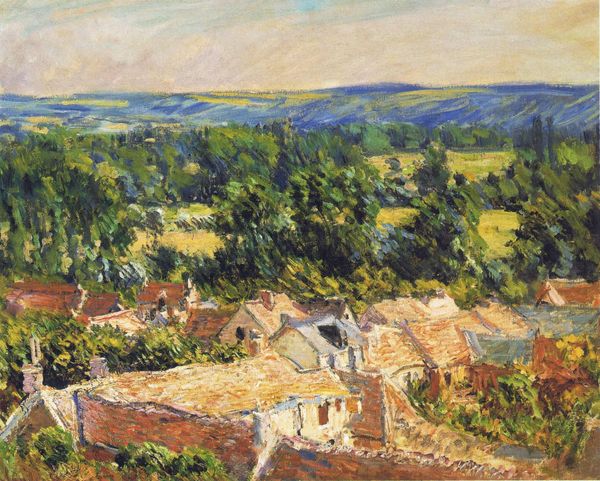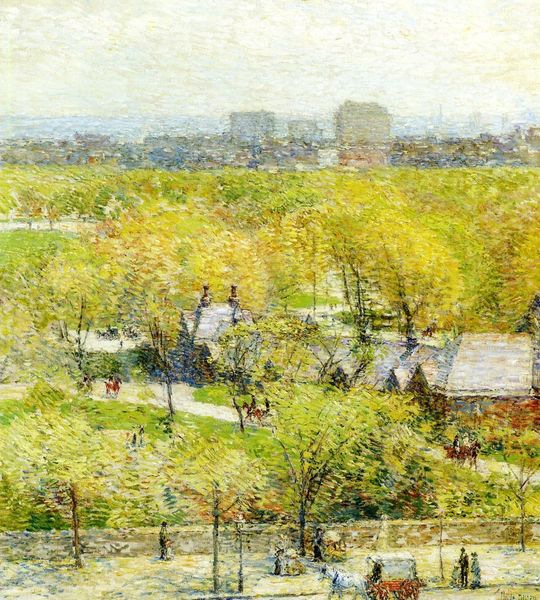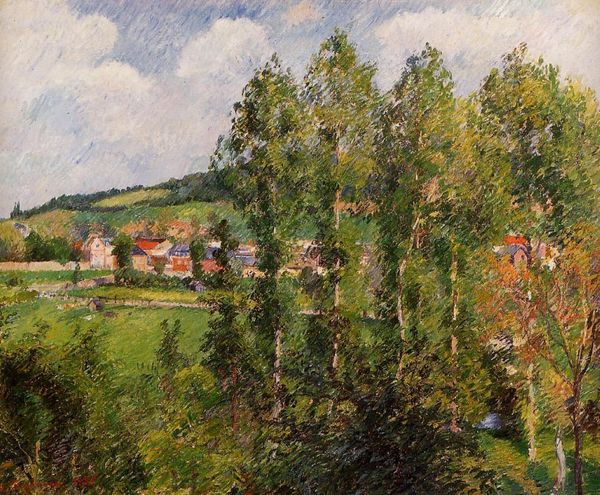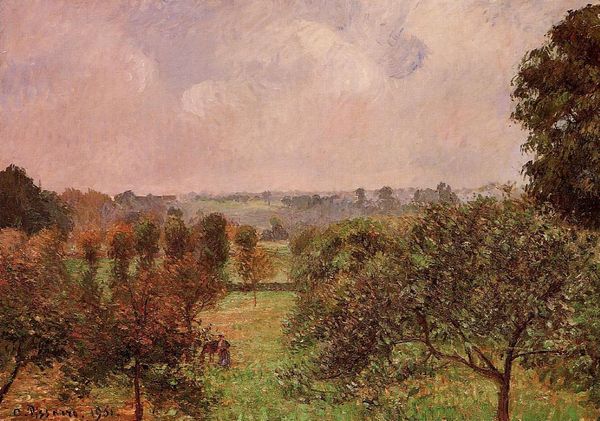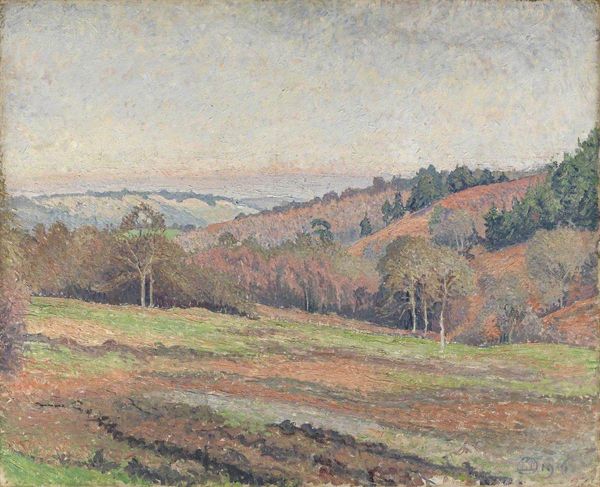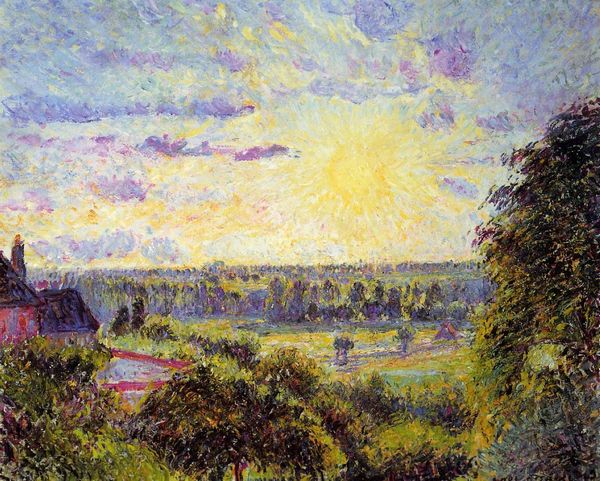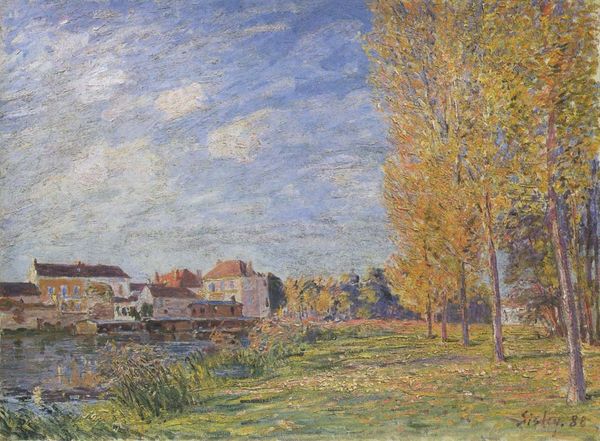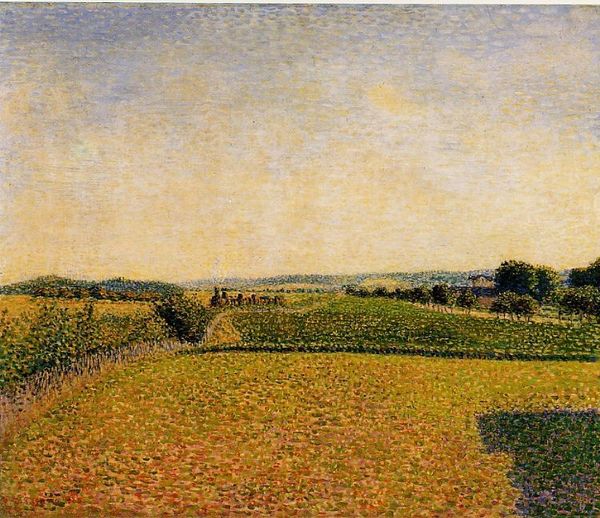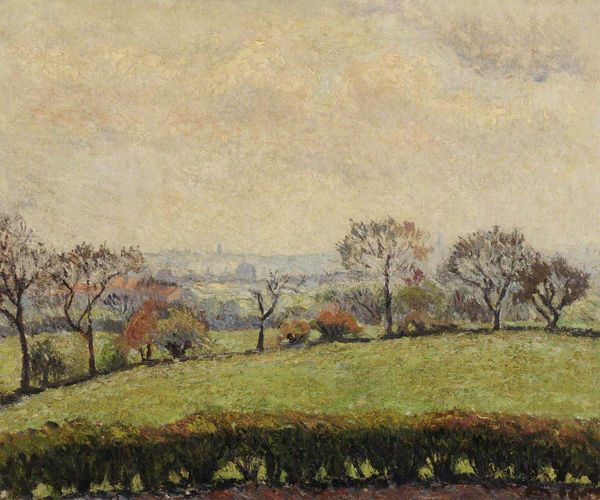
painting, oil-paint
#
painting
#
oil-paint
#
neo-impressionism
#
landscape
#
house
#
oil painting
Copyright: Public domain
Curator: What we have here is Theo van Rysselberghe's "Summer Landscape of the Moor," an oil painting that embodies the Neo-Impressionist style. Editor: It’s strikingly still. The intense dotting across the canvas almost vibrates, yet creates this pervasive, dreamlike hush. Curator: Precisely. Rysselberghe was deeply influenced by Seurat and Signac. You see it in his adoption of Pointillism, breaking down light into these tiny dots of pure color, theoretically mixed in the viewer's eye. It moves past Impressionism’s bourgeoisie landscapes, and brings in questions of industrial labor, specifically as art making transitioned. Editor: So, each of those dots represents a conscious placement, a unit of labor contributing to the overall image. Thinking about that intentionality gives me a sense of the meticulous process, the sheer effort embedded in the materiality of the piece. Curator: It’s compelling to consider the socio-political implications of this method, especially in a work representing rural life. Does the division of labor reflected in the technique mirror or critique the societal divisions of the time? It certainly challenges conventional hierarchies of art and craft. How does one place it in relation to the increasing labor protections emerging near the end of the 19th century? Editor: Absolutely. The work asks us to look more closely. But beyond that theoretical aspect, the texture—it's oil paint applied so densely that it becomes almost sculptural. Does that dense buildup relate to the heavy labor involved in cultivating this moor? Curator: That's a poignant interpretation. One might also analyze the houses and the composition: they suggest human intervention in this landscape. They represent inhabitants. And in a broader sense, what relationship does a work of this time bear on colonization and resource extraction, particularly considering Europe's global context? Editor: Seeing it that way reframes everything, doesn't it? What starts as a calm scene becomes charged with a subtle but palpable tension, where the visible process points to greater contexts. Curator: Exactly, and I find it remarkable how he synthesizes personal aesthetic expression with broader societal questions. Editor: And I’m struck by how considering the materials—the individual dots, the layering of paint—amplifies our awareness of labor, not just the artist's, but labor throughout society. Thanks for illuminating that.
Comments
No comments
Be the first to comment and join the conversation on the ultimate creative platform.
